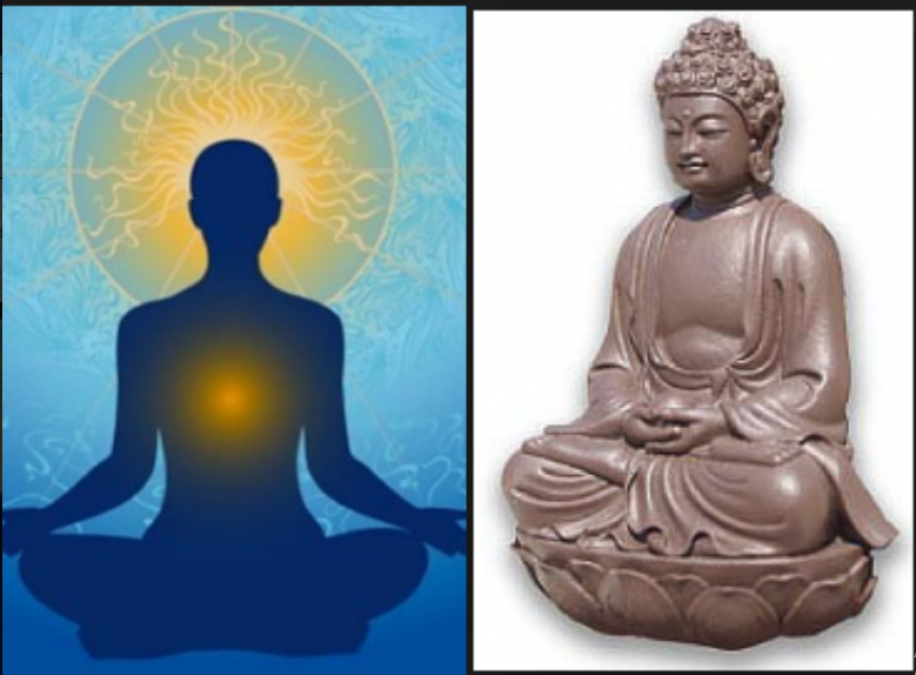
The Pali word translated into English as "concentration" is samadhi. The root words of samadhi, sam-a-dha, mean "to bring together." The Four Dhyanas (or Jhanas). The Four Dhyanas, Jhanas, or Absorptions are the means to experience directly the wisdom of the Buddha's teachings. In particular, through Right Concentration, we can be freed from the delusion of a separate self. To experience the dhyanas, one must overcome the five hindrances—sensual desire, ill will, sloth and torpor, restlessness and worry, and doubt. According to Buddhist Monk Henepola Gunaratana, each of these hindrances is addressed in a specific way: “wise consideration of the repulsive feature of things is the antidote to sensual desire; wise consideration of loving-kindness counteracts ill will; wise consideration of the elements of effort, exertion and striving opposes sloth and torpor; wise consideration of tranquility of mind removes restlessness and worry; and wise consideration of the real qualities of things eliminates doubt.”
also read Don't keep these things in Temple of the house otherwise may face loss
In the first dhyana, passions, desires and unwholesome thoughts are released. A person dwelling in the first dhyana feels rapture and a deep sense of well-being. In the second dhyana, intellectual activity fades and is replaced by tranquility and one-pointedness of mind. The rapture and sense of well-being of the first dhyana are still present.
In the third dhyana, the rapture fades and is replaced by equanimity (upekkha) and great clarity. In the fourth dhyana, all sensation ceases and only mindful equanimity remains. In some schools of Buddhism, the fourth dhyana is described as pure experience with no "experiencer." Through this direct experience, one perceives the individual, separate self to be an illusion.
also read Jainism Symbol explore mystery of Universe; Know detail here
The Four Immaterial States
In Theravada and some other schools of Buddhism, after the Four Dhyanas come the Four Immaterial States. This practice is understood as going beyond mental discipline and actually refining the objects of concentration themselves. The purpose of this practice is to eliminate all visualizations and other sensations that may remain after the dhyanas. In the four Immaterial States, one first refines infinite space, then infinite consciousness, then non-materiality, then neither perception-nor-not-perception. The work at this level is enormously subtle, and is only possible for a very advanced practitioner.
Developing and Practicing Right Concentration
The various schools of Buddhism have developed a number of different ways to develop concentration. Right Concentration is most often associated with meditation. In Sanskrit and Pali, the word for meditation is bhavana, which means "mental culture." Buddhist bhavana is not a relaxation practice, nor is it about having visions or out-of-body experiences. Very basically, bhavana is a means to prepare the mind for realizing enlightenment.
also read If you want happiness and peace in your family then just follow this one measure of Ganeshji
To achieve Right Concentration, most practitioners will start by creating an appropriate setting. In an ideal world, practice will take place in a monastery; failing that, however, it is important to select a quiet location free from interruptions. There, the practitioner takes up a relaxed but erect posture (often in the cross-legged lotus position) and focuses one’s attention on a word (a mantra) which can be repeated over and over again, or on an object such as a statue of the Buddha.
Meditation involves simply breathing naturally and focusing one’s mind on the selected object or sound. As the mind wanders, the practitioner “notices this quickly, catches it, and brings it back gently but firmly to the object, doing this over and over as often as is necessary.” While this practice may sound simple (and it is), it is very difficult for most people because thoughts and images always arise. In the process of achieving Right Concentration, practitioners may need to work for years with the help of a skilled teacher to overcome desire, anger, agitation, or doubts.